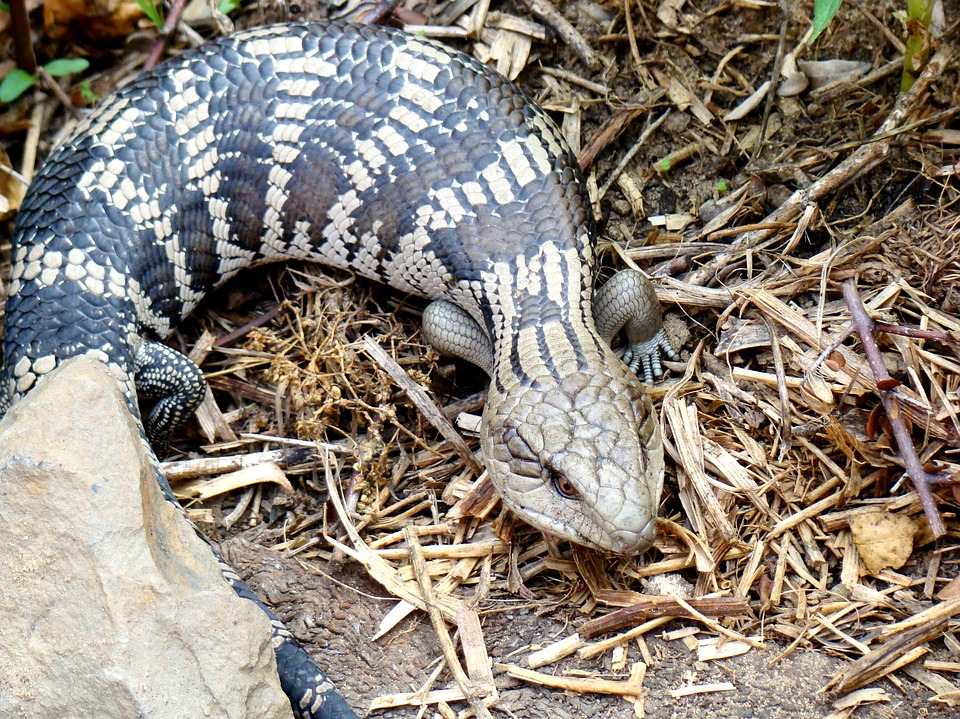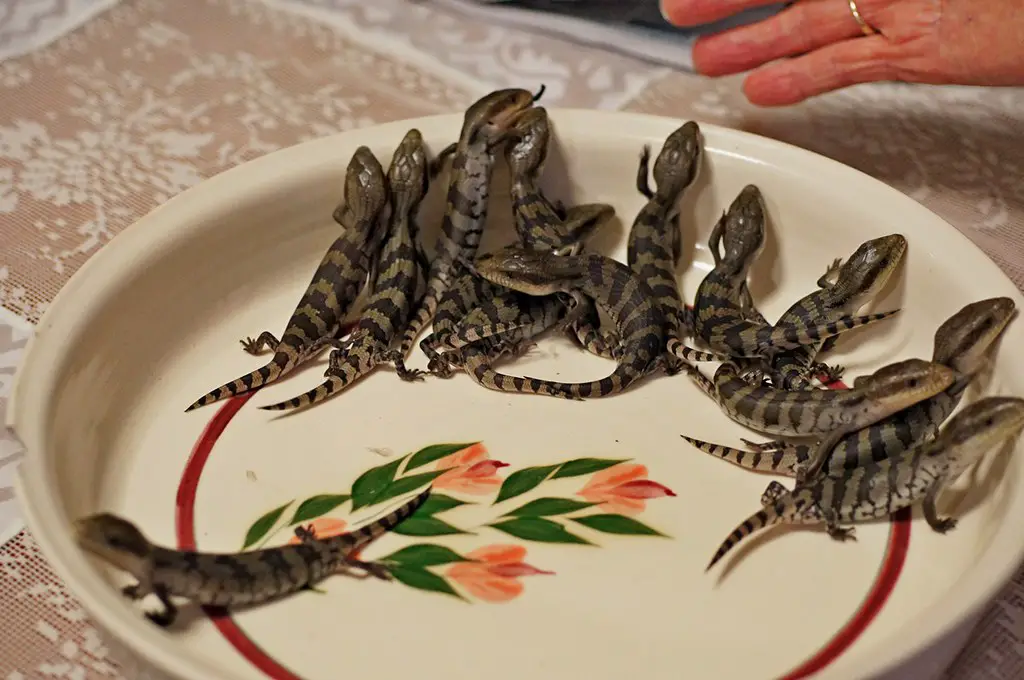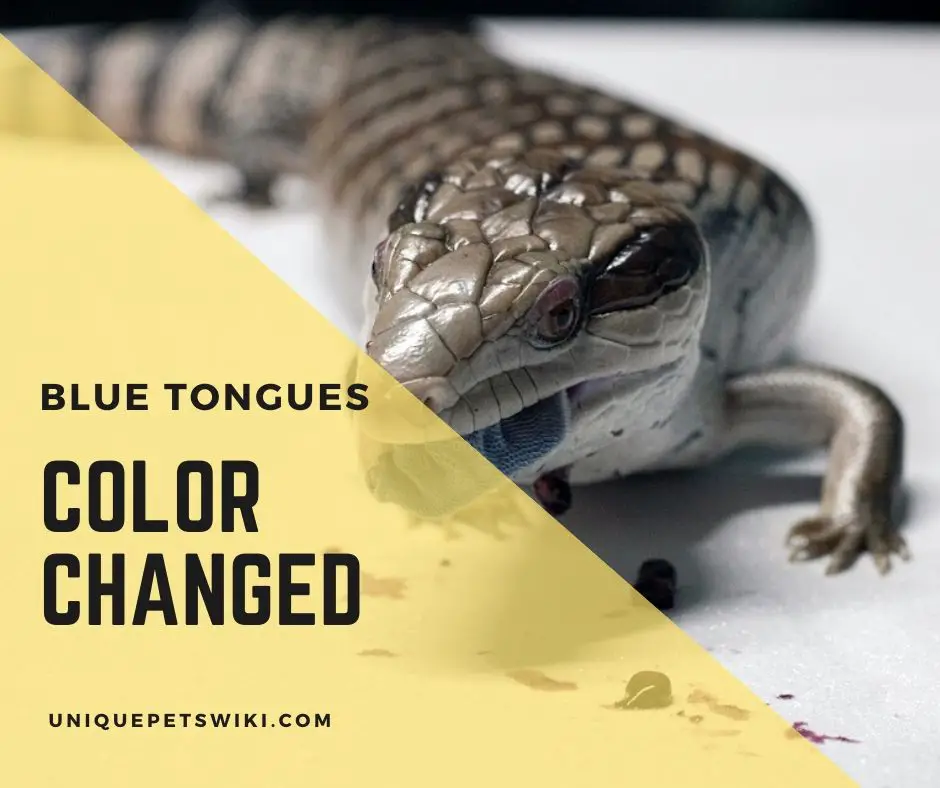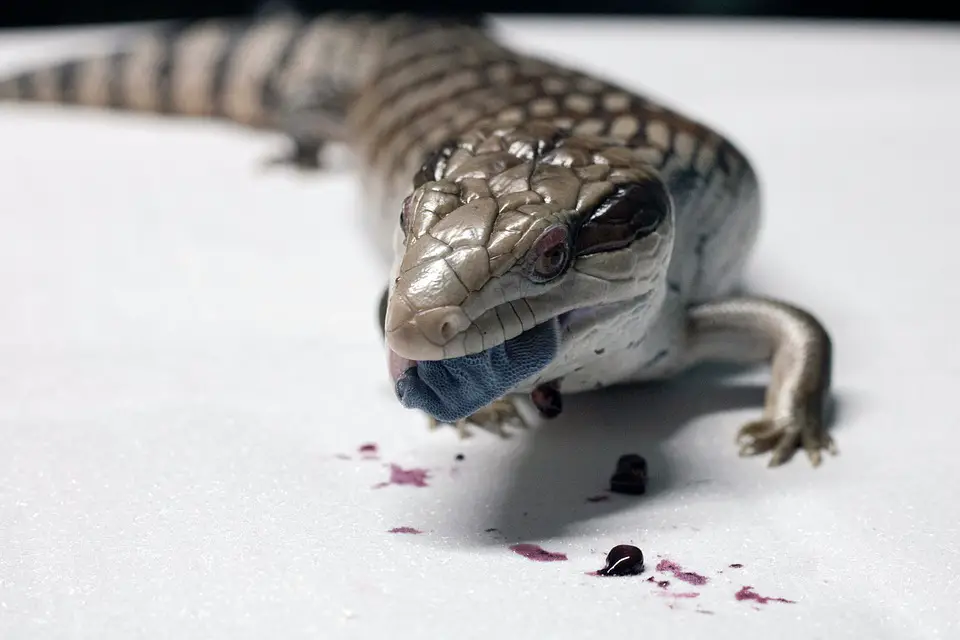Why do my skinks change colors? Is it natural or do I need to worry? Let’s help you understand your blue tongue skinks.
This article contains valuable information about its color change.
This article has been reviewed by Dr. Dilber. Read more about our knowledge control process here.
Contents
Blue Tongue Skinks
The reptiles called blue tongue skinks belong to the Tiliqua family, normally found in Australia and Indonesia.
They are the largest skink species and are distinguished by a long blue tongue that is used when frightened to protect itself.
It will stick its bright-colored tongue out when threatened to alert possible predators of imminent danger.
In extreme cases, its body will be puffed up and hisses loudly. By puffing out the body the animal appears larger than it really is. There are about 13 known species (morphs) of blue tongue skinks so far.
Do Blue Tongue Skinks Change Color?

Blue tongue skinks do change color. As they grow older, their color and appearance change.
How it changes, and from what color to what is dependent on species.
The color change differs from specie to specie. Some change the color due to the arrangement of the upper cell layer by relaxing and exciting the skin, which leads o color change. Some blue tongue skinks can change color while shedding, and some can change from a warm brown or yellow to white color.
When blue tongue skinks are about to shed, they will usually “change color.”
Most Western blue tongues tend to become darker. Some breeders have reported that Northern skinks change from a warm brown, yellow, or gold to a pink, gray, or white color.
Understanding Color Changing In Blue Tongue Skinks
Eastern blue tongue skinks

The Eastern blue tongue skinks are silvery-gray across the back and tail with broad dark-brown or blackish bands.
Some other species found around the coast tend to have a black stripe between the eye and the ear and may sometimes extend to the neck side.
Classic Indonesian skinks
AKA Tiliqua Gigas, on the other hand, are characterized by their earthy yellow or greenish coloring, sprinkling between bands, solid black forelimbs, and thin black markings on the head.
In a nutshell, the coloring of a skink depends on the species, as no two species are completely the same in color.
Change in color depends on the species
The change in color depends on the species. It is critical, in this regard, that you know the exact species your blue tongue skink belongs to.
As stated before in this article, they change color when they grow older and during shedding. In most situations when there’s a sudden dramatic change in color (like getting darker than normal within a short period of time).
It may mean that the basking temperature given to the skinks is not adequate, so it has to darken up to be able to absorb more heat.
New to blue tongue skink? Check out the blue tongue skink care sheet now! We had listed out all the things you need to know about blue tongue skinks as pets. Check it now!
How then can you tell the basking temperature supplied isn’t enough? As a breeder, it is very important that you keep an eye on your reptiles’ behaviors.
If you noticed your skink always sitting for 12hours a day directly under the basking spot, that means the basking spot isn’t hot enough.
The change in color of blue tongue skinks rarely has anything to do with illness or skin infection.
However, it’s important to have an idea of the colors of its parents before this can be established. If the color to which the skink changes is in its lineage then there is nothing to worry about.
Change In Color Due To Mood, Temperature, Background Light, And Hormone Level
Color change in reptiles is typically triggered by a hormone known as intermedin. This hormone is secreted from the pituitary gland and causes the cells in the skin to change color.
The amount of intermedin that is secreted can be affected by a variety of factors, including mood, temperature, background light, and hormone levels in the body.
As a result, blue tongue skinks (and other reptiles) are able to rapidly change their colors to match their environment.
While the ability to change colors is certainly an important adaptation, it is also important to note that not all blue tongue skinks will change color in the same way.
In fact, some skinks may only be able to produce a few different colors, while others may be able to produce a wide range of hues. Ultimately, the ability to change colors is just one of many ways that these fascinating reptiles are able to adapt to their environment.
Can We Consider Color Change As A Morph?
A morph comes about as a result of a mutation that changes the animal’s appearance. But it will not the species or breed.
Many breeders across the globe just love the genetic abnormalities that induce this modification of appearance and hence deliberately produce these special blue tongue skink morphs.
Mutations do occur naturally in the wild. But the animal will quickly be predated unless they can adapt to the environment.
A morph created by a breeder does not actually require the patterns in a color that hide it from predators.
On the opposite, selecting which animal mates another based on color combinations. It often increases the overall strength and longevity of the morphs.
When we talk about reptiles, there are at least two ways to define “morph”.
Firstly, it is used to refer to physical traits that distinguish an animal from the classic wild-type seen in nature. Albino, hypo, or axanthical traits, for example, are simple genetic traits that can mean recessive, co-dominant, or sex-linked.
This implies in essence that, there is part of a gene or one gene which has an influence on the visual trait portrayed by the animal. Most breeders would call these simple genetic traits “morphs.” Read more about reproduction in blue tongue skinks
Secondly, there are some polygenic traits that are often known as line-bred animals. These traits are produced by breeding animals with similar desired physical characteristics to each other, in order to create a higher genetic concentration which produced their “look”.
The resultant “new look” is what is referred to as a morph.
The resultant “new look” is what is referred to as a morph.
Having established this fact, considering a change in the color of your blue tongue skink that might be due to age or shedding. To a morph would be out of place. And often where no mutation has taken place to induce these changes in color.
Blue Tongue Skinks Color Changing FAQS
Are Blue Tongue Skinks Aggressive?
Like any pet trying to get used to a new environment, newly acquired blue tongue skinks may display behaviors such as hissing, hiding, or puffing up in defense. This defensive behavior is just for a moment and will subside as they get accustomed to their new homes with time and regular handling by the owner.
While blue tongue skinks are naturally calm, quiet and docile pets; some species however, are extremely aggressive, and should not be kept as pets. One of the most aggressive skinks is the Tanimbar Island blue tongue skink. Because of its aggressive nature, it’s often not recommended as a pet for families with kids.
What Does It Mean When Your Blue Tongue Skink Is Pale?
Keep in mind that coloration especially among subspecies varies. There may be shades of yellow, brown, pale gray and black on the upper body. Gray to yellow underbody, sometimes with dark markings.
But if the color of your blue tongue skink looks pale (beyond normal), it’s likely to be diet-related, temperature-related issues or simply poor reptile care. This case however is rarely reported.
Wrapping Up
Blue tongue skinks are among breeders’ most preferred captive lizards due to their compliance nature. Except for the Tanimbar Island specie, they rarely exhibit aggression.
In the wild, they are shy, and secretive, and rarely wander far from their shelters, which are made up of debris and hollow logs.
Some scientists claim that blue tongue skinks will imitate the venomous death adder to scare away predators. With coloring that resembles the venomous death adder, predators are much more likely to leave them unharmed.
Do you still have questions about blue tongue skinks? Just feel free to drop it in the comments box.


How to make my irian jaya bluetounge skink have yellow bright colors ?
Hi Daniel,
Color changing is BTS natural behavior. We can’t force it to turn to any other color out of its nature.
But you can somehow create new color/morphs via breeding. Can have a look at this article for more information.
Why does my indo blue tongue have a pink tongue? Will it get darker as it gets older?